Below are details of local non-human animals, illustrated on tiles by Bronwyn Williams-Ellis, which decorate our campsite facilities. Many thanks to Rhodri Thomas for details about these.
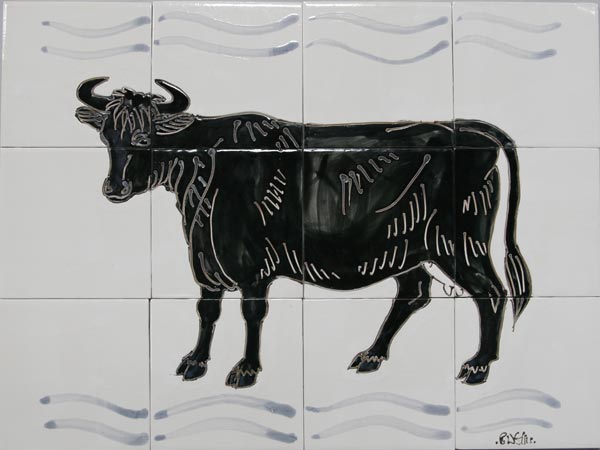
Welsh black cattle
Welsh black cattle: The noble welsh black is farmed locally, and we have a cow to illustrate them on the entrance to the ladies’. They are small agile beasts, and can often be seen in the field beyond the back boundary of the campsite fields.

Welsh mountain goats
Welsh mountain goat [Gafr wyllt] (Capra hircus):The feral goats move in extended family groups up and down the Nantgwynant valley. These locals are distinguished by their horns which emerge close together and straight, before branching out. Often seen on the opposite shore of the river Afon Glaslyn at the side of the campsite.
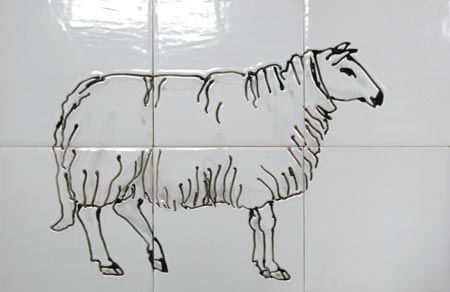
Welsh sheep
Welsh ewe: The female local sheep is also small, and agile and is ‘hefted’ meaning she knows which part of the mountain she was born and likes to stay there, passing this on to her offspring.

Badger
Badger [Mochyn daear](Meles meles): There are several badger burrows, known as setts, very close to the campsite and you often see them on the site at night. Tunnels are typically 10-20 metres long but can be over 100 metres, and badgers may excavate as much as 25 tonnes of soil when digging them. Badgers live in family groups or “clans”. They often dig the grass up hunting for food, mainly earthworms, but they will also eat beetles and other invertebrates, nuts, berries, roots, bulbs, small mammals and birds and carrion. The Welsh name means “earth pig”.

Otter
Otter [Dyfrgi](Lutra lutra): These long slender creatures were recently in severe decline locally, but we have increasingly seen them at the rivers edge near the stone bridge. Their populations have in fact recovered across Britain in recent years as a result of improvements in river quality. There is some evidence that, where otters have returned, populations of the endangered water vole have also increased as a result of otters driving out their main predator, the introduced american mink. Otters live primarily on fish.

Red fox
Red Fox [Cadno](Vulpes vulpes): Foxes are common on the campsite and we do not support local fox hunting (which is undertaken here from vans and pickups!). These animals live in small family groups – we once had a family living under our old campsite reception. They will kill weak or premature lambs in the spring.
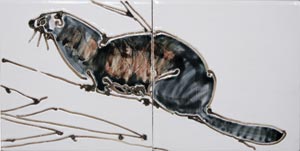
Polecat
Polecat (Mustela putorius) is a kind of weasel, less territorial than other such mustelids, but can give out a smelly fluid when disturbed!
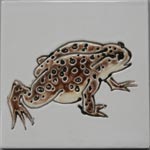
Common toad
Common toad [Llyffant dafadennog](Bufo bufo): These widespread amphibians are most active in wet weather and are frequently found at the campsite and in the woodland surrounding it. The adults stay on land though the females lay eggs in water, preferring deeper ponds than frogs. Glands on the skin secrete a poison which deters would-be predators. In 1859 the naturalist Francis Buckland wrote “a man once made a wager, when half drunk in a village public-house, that he would bite a toad’s head off; and he did so, but in a few hours his lips, tongue and throat began to swell in a most alarming way, and he was dangerously ill for some time.

Hedgehog
Hedgehog [Draenog](Erineus europaeus): These spiny creatures, whose 5-6,000 spines are actually modified hairs, are common and apparently have changed little over the last 15 million years. Their method of defence is to roll into a tight ball, serving them well against animal predators but proving a disastrous strategy when faced with an oncoming car. They are evidently a good cure for madness, as cited some 300 years ago- “For a lunatic. Take a hedge-hog and make broth of him, and let the patient eat of the broth and flesh.” So if you’re feeling slightly mad…
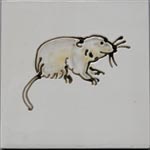
Field vole
Short-tailed (Field) vole [Llygoden bengron y gwair](Microtus agrestis): These creatures are widespread in wood and farmland- in fact, although secretive and rarely seen, they are probably Britain’s commonest mammal with an estimated population of 75 million. They breed three times from March to October and live only four and a half months, so die after their last reproduction. Originally called “vole-mice”, the name cames from the Norwegian vollmus, meaning “field mouse”.

Rabbit
Rabbit [Cwningen](Oryctolagus cuniculus): These animals live in family groups in burrows, and are occasionally seen on the campsite. Rabbits feed by grazing on grass and leafy weeds. We currently have far too many at the campsite!

Frog
Frog [Broga](Rana temporaria): Frogs have permeable skin and like to live in damp places, and so can commonly be found in this area. The expression “frog in the throat” alludes to the croaking call, but also has a more literal interpretation, as eating a live frog was often recommended for whooping cough. Frogs can live up to 8 years, but in recent years they have increasingly been affected by fungal infections, thought to be the result of global warming. This is threatening the global extinction of a number of frog species worldwide.
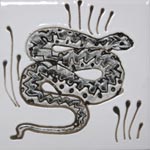
Adder
Adder: a common and venomous snake that is not however considered dangerous as it bites only when disturbed, for example when trodden on. So walk carefully in our grass!

Bat
Long-eared bat [Ystlum hirglust](Plecotus auritus): This relatively slow-flying bat prefers caves as roosting sites in the winter, but summer breeding roosts are found in trees holes, buildings and bat boxes . The roosts in trees may be close to the ground. The ears can be almost as long as the body, and enable the bat to distinguish insects on leaves by echolocation. Thus unlike most other British bats, it often feeds by hovering amongst tree branches and plucking insects off leaves, rather than in flight.

Grey squirrel
Grey squirrel an immigrant from North America, this has taken over from the native red squirrel which is no longer seen.
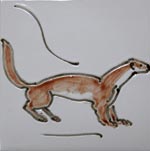
Weasel
Weasel [Bronwen](Mustela nivalis): It is thought that the name “weasel” comes from the Anglo-Saxon root “weatsop” meaning “a vicious bloodthirsty animal”. Weasel eat small animals, have long bodies and short legs.

Dragonfly
Dragonflies are insects in the sub-order Anisoptera (meaning”unequal-winged”). Hind wings are usually shorter and broader than Fore wings. They are usually larger, strongly flying insects that can often be found flying well away from water. When at rest, they hold their wings out from the body, often at right angles to it. The eyes are very large and usually touch, at least at a point. The larvae have no external lamellae. You see many of these glorious insects on the lake shore
